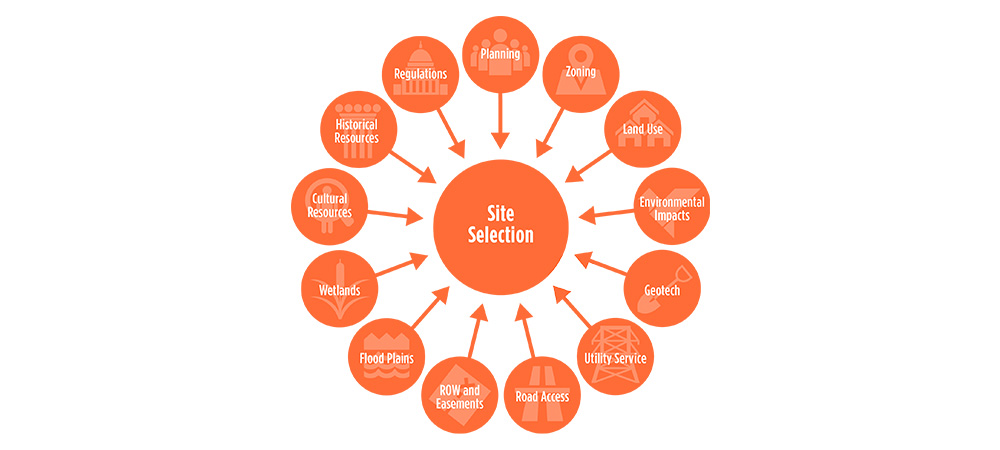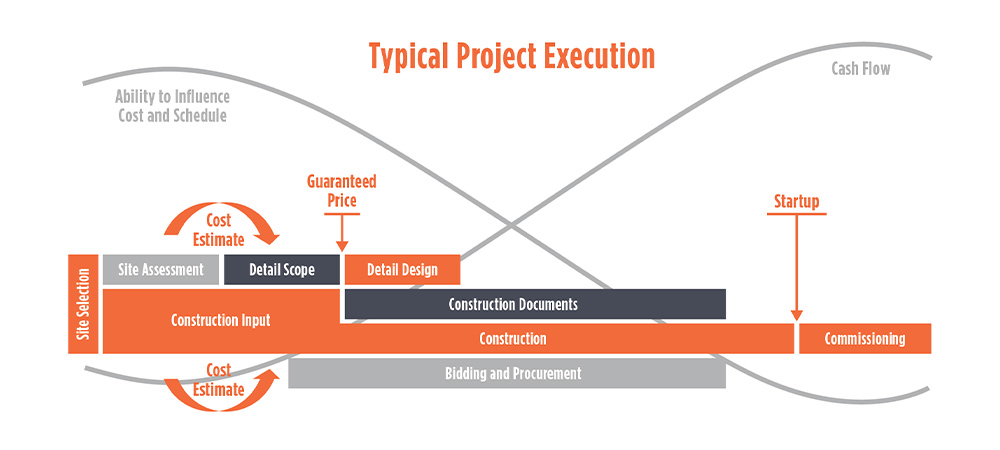When there are multiple sites up for consideration for a project, the site selection process becomes vital. The selection team will provide qualitative and quantitative technical analysis for your evaluation, whether you already have sites to compare or need help identifying potential sites before a broker is involved.
During this process, the team analyzes various development factors, which are weighed by the project to determine the optimal site for the project. This means that sites will be ranked based on both qualitative and quantitative attributes.
A range of variables will be considered, including environmental regulations, government restrictions and permits, and the overall cost of siting a project at the location.
Throughout the process, each site is given a score for each variable that is weighted for the project goals. These scores are then plugged into a scoring matrix, which ranks each site through a formula specially written for the project, allowing you to view each site’s results and weigh your options on a qualitative scale. Once specific regions, states or counties are identified for development, the selection team geospatially analyzes, scores and maps each unique parcel to highlight the most attractive parcels for development.








